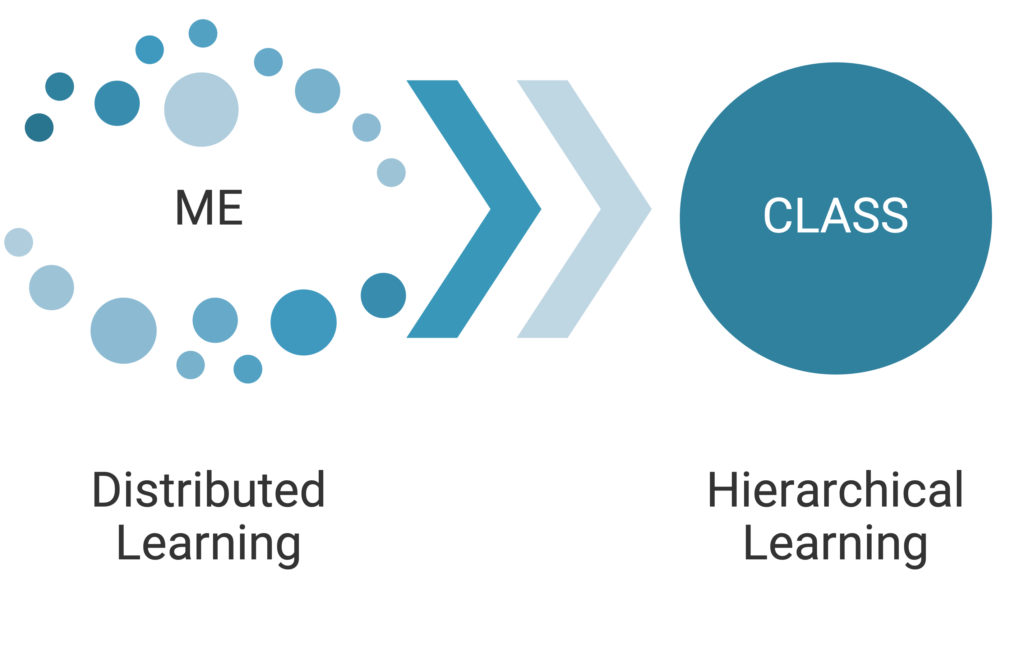Recently, I started a Harvard extension course called Leaders of Learning, taught by Richard Elmore, a professor at the Harvard Graduate School of Education. While I’m still early in the course materials, it re-inforces to me that I’ve always been a bit of an individual learner but group instructor. Going deep on topics of interest to me even when there is seemingly no benefits and often has led to creating a learning opportunity in others.
Hierarchical Learning
I remember elementary school so vividly, although it was so long ago that there were no computers. In part, I think that school came easy to me because I enjoyed learning. While in the classroom – I was diligent in completing my classwork. In high school and college, I couldn’t wait to get my hands on the class syllabus to look ahead – to consider what we’d be learning that term. Acquiring my stack of new textbooks and school supplies would make me practically giddy. And during class, there was a particular ritual feel to the “lecture – notes – reading” style of learning. My hand would cramp from all the writing; close by was always my highlighter. Having a teacher take the guesswork out of our learning options and handing us a structured guide made it easier to know if I was successful.
Distributed Learning
But the hints of distributed learning were always there, waiting in the wings.
In first grade, I reorganized our class library after school so I would know all the books that we had available and which ones I wanted to borrow. In third grade I read all the books our school library had on Greek Mythology (a topic both my children have also seemed fascinated in).
When computers came into the picture, I would go deep down a rabbit hole on a topic linking from article to article to learn as much as possible on the topic. And now, even watching TV becomes an educational event as I search using my second screen any questions that might come up from watching the programming. It could be anything from “what year was this published?” to “what other show has that actress been in?” to “are there more registered democrats or republicans in the US?”.
Synthesizing Material

As an adult learner, and eventual trainer, it comes as no surprise to me that my learning style is as a distributed individual learner. Don’t get me wrong, I still love a formal class with an outline, syllabus, and textbook. But so much of what I’ve needed to learn in my my adult life hasn’t fallen neatly into that box. Something I never really thought about is how often that individual distributed approach to learning has lead to me creating the more formal hierarchical mode.
My Examples: Distributed to Hierarchical
Programming
As a new college graduate working in my first job as a website developer, database connected websites were fairly new. Most websites were static but I wanted to see them do more. So I read other websites, found obscure books, went to user groups to expand my knowledge of building dynamic websites.
A few years later, armed with confidence of being experienced in this new line of website development, I went on to teach a live instructor-led website programming course all over the country as one of the few certified instructors in the topic.
Photography
With the birth of our son, my husband gifted me a DSLR camera. Nice digital cameras were just starting to become affordable, at the time, and while there was plenty of material on how to take professional portraits, there was definitely a gap when it came to family candids in a digital world.
Armed with my camera manual, lots of YouTube videos, and reading pro-blogs, I synthesized that material while practicing often in my backyard. I eventually turned the knowledge into a highly successful small group photography class for moms and started selling the materials to pro photographers that wanted to expand their services to include these courses.
SaaS Software
I've never been afraid of complex software. Heck, if I had been, I would never have become a freelance eLearning developer and Adobe Certified Professional.
I spent 8+ years with a company that sold enterprise agency management software to insurance brokers. In my time there I learned not only about the software, but quite a bit about the insurance agency. This helped tremendously as I taught not only one-on-one private implementation sessions with new customers, but as I developed the outline and course videos for their extensive customer support website.
Practical Application
Armed with this knowledge, I feel better prepared to continue down the road of instructional design & course authoring. I have been doing this for many years without even really thinking about it or realizing it. One of the skills I bring to the table is my interest in a vast number of topics. This thirst for new information helps me to review and organize source material into a structured class. And having the technical and project management background to back me up as the projects are larger and more complex helps as well.

